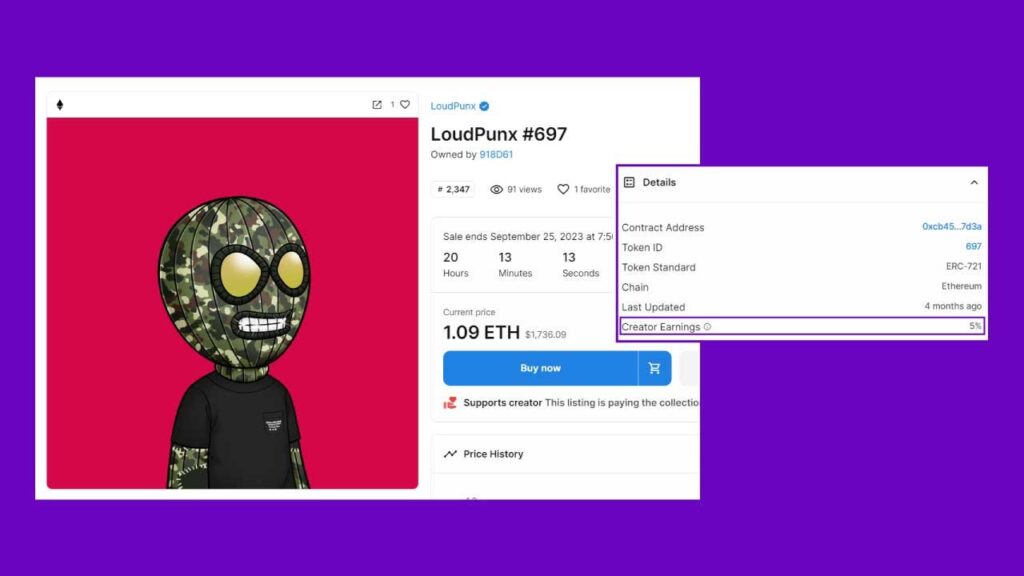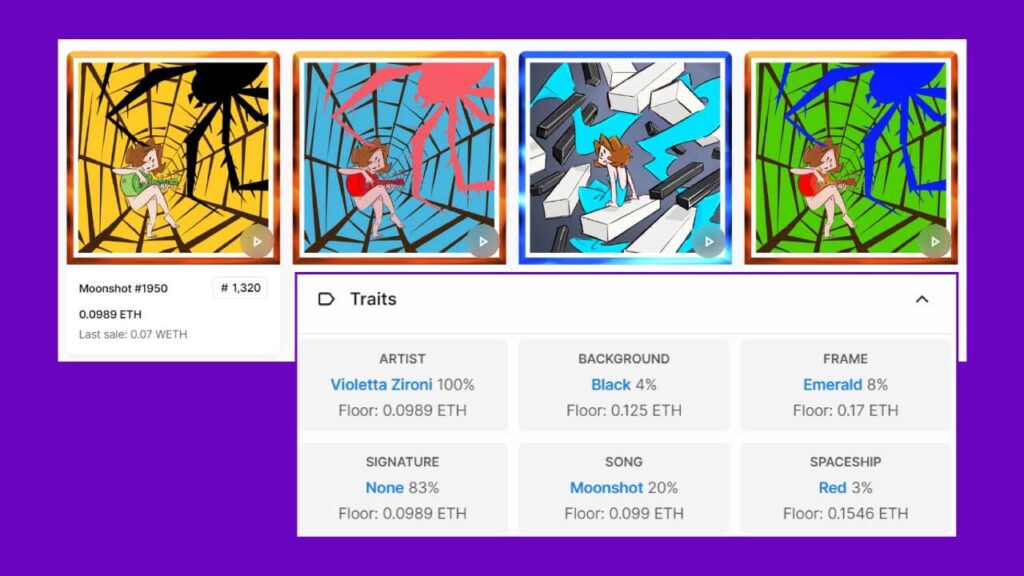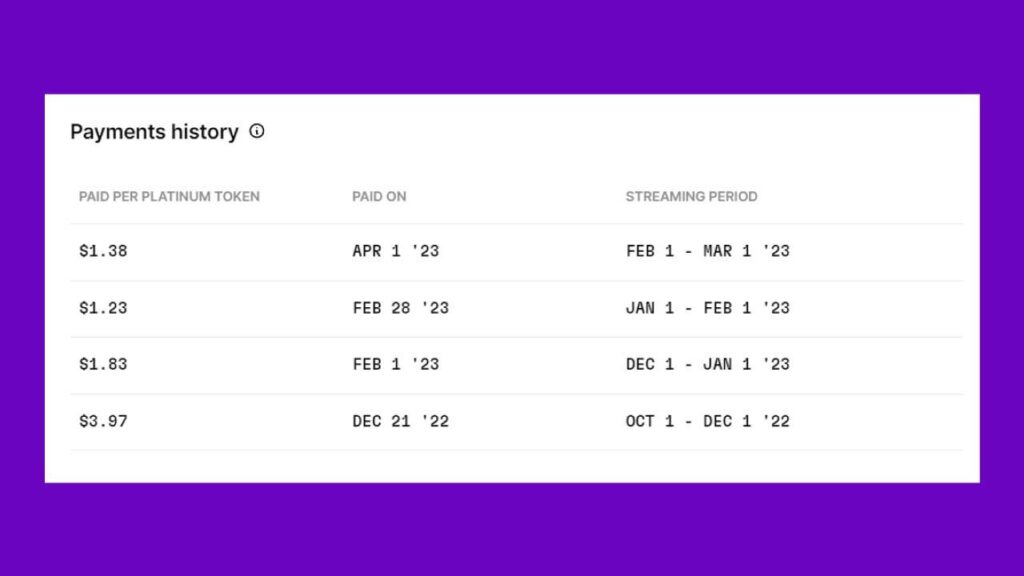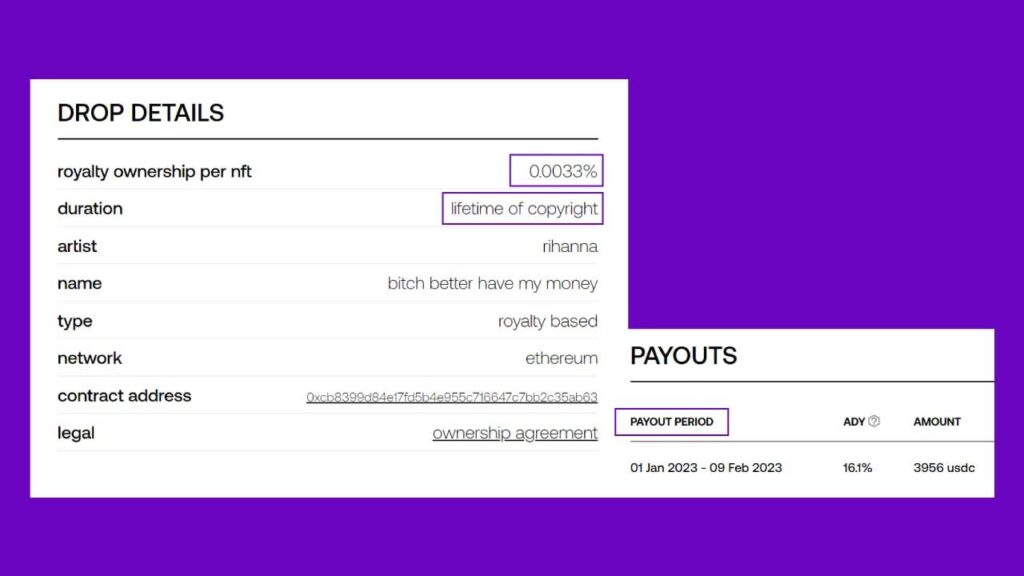Just like any digital asset can be issued on the blockchain, music can be put on blockchain too. But why? Are there any advantages? Can this ‘music NFT’ thing save the music industry?
Well, there is a lot to unpack.
In this article, we’ll dive into what Music NFTs are, how they’re shaking up the music world, and why artists and fans are excited about them. We’ll also chat about the challenges and what the future holds for this musical revolution.
NFTs, or Non-Fungible Tokens, are like digital certificates of uniqueness. Think of them as digital collectibles that prove you own something one-of-a-kind in the digital world.
Unlike money or cryptocurrencies like Bitcoin, which are fungible (interchangeable), NFTs are unique and cannot be exchanged on a one-to-one basis.
Example: Imagine you have a rare baseball card. It’s not like dollar bills where any two dollar bills are worth the same. Instead, your baseball card is special because it’s signed by a famous player, and there’s only one in the world exactly like it. That uniqueness is what NFTs bring to the digital realm.
Blockchain: The Digital Ledger of Trust
Now, let’s talk about Blockchain, the technology behind NFTs. Blockchain is like a public, unchangeable ledger (a digital record) that records transactions and ownership. It’s a technology that brings transparency and trust to the digital world by ensuring that no one can alter or fake records.
Example: Think of a public library where everyone can see a list of books and who borrowed them. No one can sneak in and change the list because it’s open for everyone to check. Blockchain works similarly, making sure that digital ownership records are secure and tamper-proof.
So, how do Music fit into NFTs?
Music NFTs take the idea of NFTs and apply it to music. Musicians create unique digital music or special versions of their songs and turn them into NFTs.
These tokens are stored on a blockchain, ensuring that the ownership and authenticity of the music are indisputable.
Let’s say a famous artist releases a limited edition of their latest album as Music NFTs. Each NFT represents one of these special albums.
When someone buys an NFT, they own that specific, rare version of the album, and it’s recorded on the blockchain. This ownership can be proven, just like owning a signed copy of a vinyl record.
Each Music NFT, just like any NFT, has a unique token ID and contract address that sets it apart from others.
Moreover, what’s typically associated as the “content” of an NFT is stored in its metadata, which can point to images, videos, music, or other forms of media.
This means that when you own a Music NFT, you not only possess the digital file of the music but also the proof of its uniqueness and authenticity, all recorded securely on the blockchain.
Artists can convert their songs into NFTs and then sell them to their fans, directly via a marketplace.
Ok, but how does a music file aka an mp3 file becomes an NFT. It’s through a process called minting.
Minting is the process of converting an digital file into a one-o-a-kind digital asset, by assigning a unique ID on the blockchain. And that digital asset is the NFT.
Check this guide on how music NFTs can be minted on OpenSea, one of the biggest marketplaces out there for buying and selling NFTs.
Once the NFT gets minted, artists can list it on the marketplace for sale. And the good part is these artists can even earn for every resale of their NFTs by setting a royalty (%). For example, look at this Music NFT from LoudPunk.

If you scroll down a bit, you can see the section called creator earnings.
So for every resale, the fan earns the resale amount (excluding the 5% and platform % charges), and the creator aka the artist will earn 5% of that amount. For every 100$ resale, the artist earns 5$.
Ok, but who are creating these NFTs, how are they being sold?? And what’s the advatange of owning one? Let’s understand that with a few examples.
Italian singer-songwriter Violetta Zironi has created an NFT collection called Moonshot. This collection is based on 5 songs written by Violetta Zironi and 2500 unique, hand-drawn artworks by Giuseppe Zironi (Violetta’s dad), a renowned Disney illustrator for over 30 years.

Now, each of these 2500 NFTs are different, with different traits attached to them. So, the rarer a trait, the higher the value, the higher the price. Ok, but’s the advantage for me, as a fan, by owning one?
Many NFTs come with something Utility, which basically expands to ‘What’s in it for the holders?’
Ok, but how does owning a piece of music which I can listen to it without even having to pay make sense? You should probably read this article: Why NFTs Make Sense In A Status Driven Society
Justin Blau, who is better known by his artist moniker ‘3LAU’ made mainstream headlines when he became the first musician to sell an album as an NFT, earning upwards of $11.6 million in less than 24 hours.
The company Royal, founded by 3LAU with his college roommate, JD Ross, will have the ability for fans to earn royalties both on-chain and off-chain on platforms like Spotify, Amazon, and Apple Music, because Royal is not a streaming service — it’s just selling tokenized contracts.
Imagine, owning a piece of music of your favourite artist and being able to earn from the share of royalties.
3lau believes that being a partial owner will incentivize fans to stream and advertise music more — and, in theory, that benefits everyone from the artist to the fan, and even the label if the artist is signed.
Royalty payouts for 3LAU Worst Case song NFT holders:

Do you know that Singer Rihanna’s hit song “Bitch better have my money” was turned into an NFT?
The song’s producer, Jamil “Deputy” Pierre, teamed up with European crypto startup AnotherBlock to offer a unique opportunity.
They sold a portion of the song’s streaming rights as NFTs, and the entire collection sold out almost instantly upon the announcement.
300 NFTs were created, each priced at $210. Buyers of these NFTs became owners of 0.0033% of the streaming royalties for the song. This approach allowed fans and collectors to have a stake in the song’s success.

NFT collectors can anticipate returns ranging from 6.1% to 6.8% in the first year, based on figures from AnotherBlock’s website.
Music NFTs have the potential to revolutionize the way artists create, distribute, and earn income from their music.
Artists now no longer have to rely on record contracts, brand deals, and extensive touring to advance their careers.
All thanks to the blockchain technology and smart contracts that power these NFTs, and can’t wait to see how these music NFTs are gonna change the music industry.